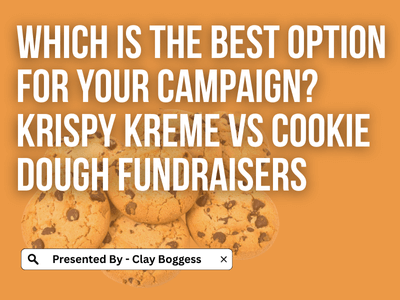
Low-hanging fruit you shouldn't overlook.
Everyone knows the adage, "You can work hard, but to succeed, you must also work smart". This sounds great, but how does it apply to school fundraising? Unfortunately, too many sponsors prefer to take neither approach. They're forever searching for that elusive wonder product that magically sells itself. You know, the one that won't require any work on their part. Once they find it, they'll ask their students to go out and make the sales. Everyone will want it so that the money will pour in.
But do these excellent products exist? Remember that every fundraising company wants you to believe they offer excellent products. Companies spend big money on promotional advertising and materials, trying to convince you that they're the ones that have excellent products that will make you lots of money.
In reality, even if you've found a sensational product to sell, improving your sales outcome still comes down to taking advantage of the following three mundane, often overlooked fundraiser tasks.
1. Setting a Fundraising Goal
Many sponsors plead with their students to go out and sell as much as possible. But with this approach, how will you know whether you're successful?
Instead, you should already know how much money you need to raise before your kickoff meeting. Then based on how many students are in your group, you can easily calculate how many items they'll need to sell. This will give your students a goal to shoot for. They'll also know when they've achieved success.
Determine Your Fundraiser goal
2. Using Prospecting Lists
Everyone tells their students only to approach people they know. This list includes neighbors, family, and friends. But what does this mean? At best, it's an overused slogan that only provides a vague guideline. Most people don't pay much attention to it anyway.
Instead, challenge your students to brainstorm and write down actual people's names they can approach. This way, they'll be better prepared to leave your kickoff meeting with a practical plan. These are potential customers that they feel will most likely make a purchase. This gives students much-needed confidence, and that's important, especially at the beginning of the sale. Prospect lists also hold students accountable for tracking their progress.
Learn more about prospect lists
3. Tracking Your Fundraiser
Can you know how well your sale goes before your fundraiser ends? The answer is yes. By tracking your student's progress, you can hold them accountable to ensure they stay on task. This is probably the most effective way to influence selling with high school students.
How to track your fundraising progress
If you effectively implement these seemingly boring and often neglected fundraiser tasks into your sales, it probably won't matter what product you sell.
Author Bio
Clay Boggess has been designing fundraising programs for schools and various nonprofit organizations throughout the US since 1999. He’s helped administrators, teachers, and outside support entities such as PTAs and PTOs raise millions of dollars. Clay is an owner and partner at Big Fundraising Ideas.



